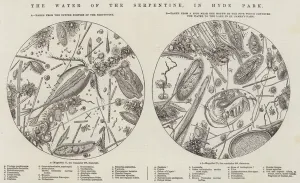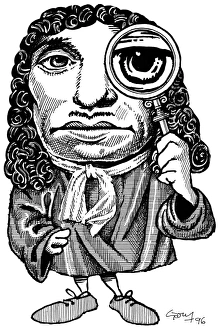Animalcules Collection
Discover the fascinating world of Animalcules, microscopic marine life that once captivated the curiosity of 17th-century scientists like Anton van Leeuwenhoek
All Professionally Made to Order for Quick Shipping
Discover the fascinating world of Animalcules, microscopic marine life that once captivated the curiosity of 17th-century scientists like Anton van Leeuwenhoek. Wander through Hyde Park's Serpentine Water, as depicted in this engraving, and imagine the tiny organisms, such as Infusoria and Animalcules, thriving in its depths. With the aid of early microscopes like Wilson's pocket microscope or Leeuwenhoek's own design, these minuscule beings were brought to light, revealing a universe of intricacy and diversity. Observe the Actinosphaerium protozoan, one of many Animalcules, in this historical microscope artwork, and marvel at the wonders of the microscopic world that continues to inspire scientific exploration.










